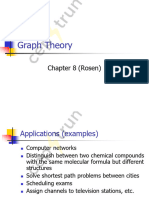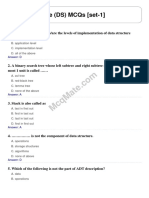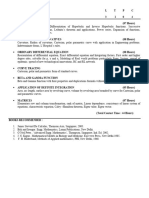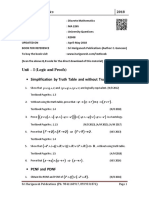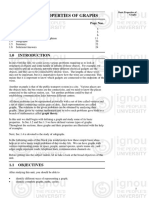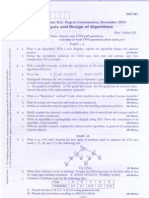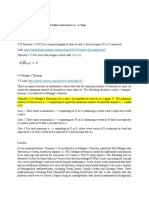0% found this document useful (0 votes)
42 views49 pagesGraph Theory Notes
An important concept under the discrete mathematics -- Graph Theory. The pdf contains succinct notes on Graph Theory.
Uploaded by
Rupesh BhattaCopyright
© © All Rights Reserved
We take content rights seriously. If you suspect this is your content, claim it here.
Available Formats
Download as PDF, TXT or read online on Scribd
0% found this document useful (0 votes)
42 views49 pagesGraph Theory Notes
An important concept under the discrete mathematics -- Graph Theory. The pdf contains succinct notes on Graph Theory.
Uploaded by
Rupesh BhattaCopyright
© © All Rights Reserved
We take content rights seriously. If you suspect this is your content, claim it here.
Available Formats
Download as PDF, TXT or read online on Scribd
/ 49
















































